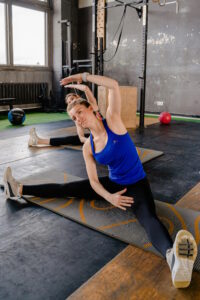
Embarking on a journey to enhance your core strength through Pilates is a commendable endeavor. This holistic practice offers a pathway to a stronger, more stable core that serves as the foundation for overall well-being. As a beginner, it’s natural to have questions and uncertainties about how to begin. In this guide, we’ll navigate the landscape of starting Pilates for core strength, addressing key considerations, practical steps, and insights that can set you on a fulfilling and transformative path.
How Do You Build Core Strength for Pilates?
Building core strength for Pilates involves a systematic and mindful approach. Pilates uniquely targets both the superficial and deep core muscles, fostering a balanced foundation of strength and stability. To lay the groundwork:
1. Mind-Body Connection: Begin by cultivating awareness of your core muscles. Focus on engaging your abdominals, pelvic floor, and lower back during everyday activities.
2. Proper Breathing: Practice diaphragmatic breathing, allowing your breath to initiate and guide movements. Proper breathing enhances core engagement and overall effectiveness.
3. Alignment and Posture: Maintain proper alignment during daily activities to reinforce core engagement. Practice standing tall with shoulders relaxed and abdominals gently pulled in.
How Do I Start Pilates for Beginners?
Starting Pilates as a beginner involves a gradual and progressive approach. Here’s a step-by-step guide:
1. Consult a Professional: Before beginning any new fitness regimen, consult a healthcare professional, especially if you have any pre-existing conditions or injuries.
2. Choose a Suitable Class: Opt for beginner-level Pilates classes or tutorials. These sessions typically focus on foundational exercises, proper form, and core engagement.
3. Learn Basic Movements: Familiarize yourself with key Pilates movements, such as the “Pelvic Tilt,” “Abdominal Scoop,” and “Imprint,” which lay the groundwork for core engagement.
4. Use Props Sparingly: While Pilates often incorporates props like resistance bands and stability balls, start with mat-based exercises to build a strong foundation before adding props.
5. Focus on Quality, Not Quantity: Emphasize precise form and controlled movements over the number of repetitions. This approach maximizes core engagement and minimizes the risk of injury.
What I Wish I Knew Before Starting Pilates?
Embarking on a Pilates journey involves insights that can enhance your experience:
1. Patience is Key: Progress in Pilates takes time. Embrace patience and consistency as you gradually build core strength and refine your technique.
2. Mindful Movement Matters: Pilates is about quality over quantity. Focus on proper alignment, breath, and engagement to fully experience the benefits.
3. Modifications Are Your Friends: As a beginner, don’t hesitate to use modifications to suit your fitness level. Modify exercises to maintain proper form and avoid strain.
4. Rest and Recovery: Just like any form of exercise, adequate rest and recovery are crucial. Allow your body time to recuperate and adapt to the new demands.
How Many Times a Week Should a Beginner Do Pilates?
For beginners, starting with 2-3 sessions per week is recommended. This frequency provides your body with adequate exposure to Pilates principles and exercises while allowing time for recovery. As you become more comfortable and your core strength improves, you can gradually increase the frequency to 3-4 sessions per week.
Summing up our beginner’s guide to starting Pilates for core strength, we’ve navigated the essentials of building core strength through mindful movement, outlined practical steps for beginners, shared insightful tips, and discussed optimal frequency. As you embark on this enriching journey, remember that Pilates is not just about physical transformation; it’s a pathway to discovering a stronger, more connected, and empowered version of yourself.